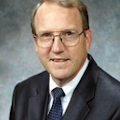Multimedia publishing intriguingly changes how journalists define their products, even their roles.
Although editors at Oil & Gas Journal continue to distinguish between "print" and "online" formats, for example, definitions are blurry.
Articles appearing in the magazine, and therefore accessible only to subscribers, are said to be "in print." Those appearing on OGJ Online (www.ogj.com) and populating several electronic newsletters obviously are "online." A few offerings on the web site require subscription credentials.
No paper, no ink
Handy though print-online distinctions may be, they're not altogether precise. Being "in print" no longer requires ink and paper.
Those venerable substances come into play only with the first issue of OGJ each month. The other weekly issues are fully digital. They look like the paper-and-ink magazine. They have covers, pages that turn, and type like that in physical editions. But they're all digital: print on computer, tablet, and phone screens-no paper, no ink.
Multimedia publishing also creates new categories, such as social media. Characteristically, OGJ has found creative ways to use Twitter, Facebook, and LinkedIn to serve its audience, which seems to approve. Performance numbers-"likes," "tweets," "retweets," and all that-are impressive. They grow steadily.
Given these changes, a nickname staff veterans still affectionately apply to their product seems somehow deficient. OGJ has become more-much more-than The Big Yellow Book.
These developments smash holes in what once served as a professional wall between "print" and "broadcast" journalism. Formerly, an editor or reporter worked on one side of that wall or the other, seldom both. Occasionally, a journalist crossed to the other side-but not often. Such moves usually drew scorn from colleagues left behind.
Yet online publishing and social media do broadcast information. And television and radio stations now publish stories in print-like text on their web sites.
So, like print vs. online, the print-broadcast dichotomy seems doomed.
At OGJ, this restatement of category recently took another step.
The Big Yellow Book-cum-Website-cum-Social Media Platform has begun telling the oil and gas story via television.
In a shiny new studio at OGJ offices in Houston, editors interview experts on camera about subjects important to the industry for a feature called Oil & Gas Executive Spotlight.
The inaugural interview was with Kenneth A. Hersh, chief executive officer of NGP Energy Capital, who discussed the oil-price decline and adaptations made so far by the industry. Then Michelle Michot Foss, chief energy economist and program manager of the Center for Energy Economics, Bureau of Economic Geology, University of Texas at Austin, described research indicating oil and gas price levels needed to sustain US production.
Kathleen Eisbrenner, founder and CEO of NextDecade LLC, appeared next, telling how management of LNG projects is changing in an oversupplied market.
Most recently, Richard Westney, founder and director of Westney Consulting Group, answered questions about trends in project management and changing relations between contractors and owners.
All interviews, each divided into digestible segments, are accessible without cost or subscription on OGJ Online (www.ogj.com). Click the "Resources" tab near the top right of the home page, then "Executive Spotlight."
Other interviews will follow as schedules allow.
Old dogs, new tricks
Of course, the old question arises whether old dogs can learn new tricks. Can someone who has toiled for, say, more than 40 years as a print journalist actually become a television interviewer?
Well, Executive Spotlight interviews aren't auditions for CNN. The interview subjects aren't politicians. TV-style gotcha questions serve no purpose when subjects are accomplished experts with much of value to tell a professional audience.
Here, the journalist's job seems to be to ask questions that evoke interesting and informative responses and to make the conversation flow cohesively.
That role doesn't make an old print guy feel much like a TV personality. This old print guy surely doesn't look like one.
But he finds interviewing interesting people smarter than he is on camera more fun than probably should be permissible during working hours.
About the Author

Bob Tippee
Editor
Bob Tippee has been chief editor of Oil & Gas Journal since January 1999 and a member of the Journal staff since October 1977. Before joining the magazine, he worked as a reporter at the Tulsa World and served for four years as an officer in the US Air Force. A native of St. Louis, he holds a degree in journalism from the University of Tulsa.